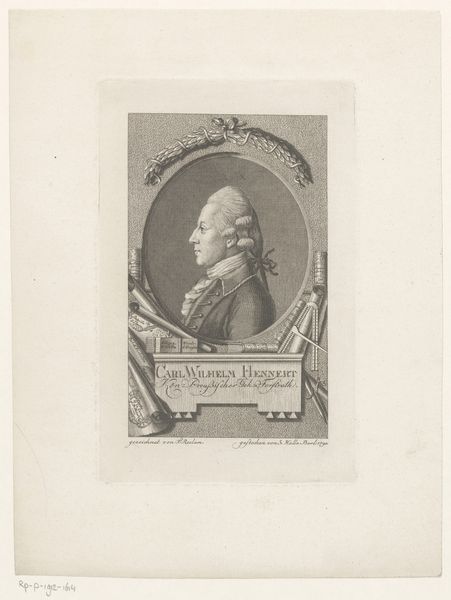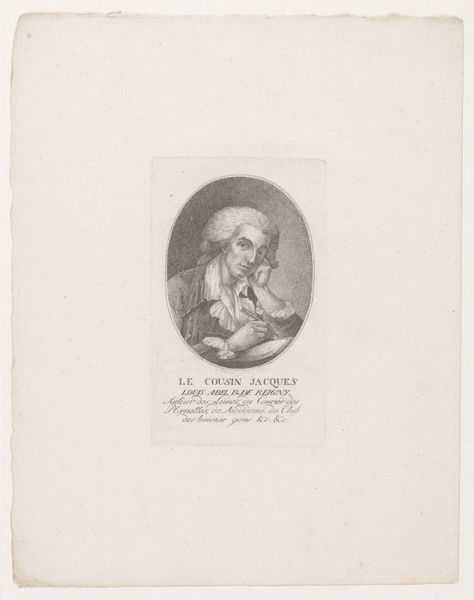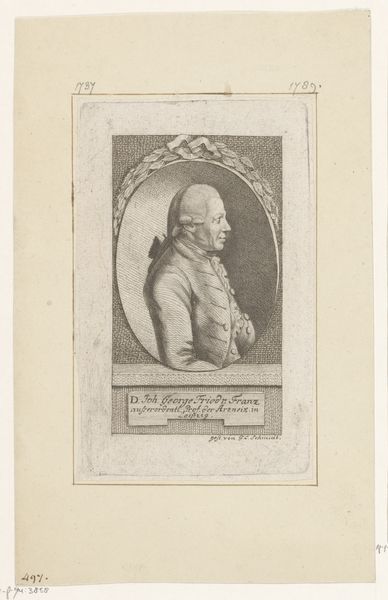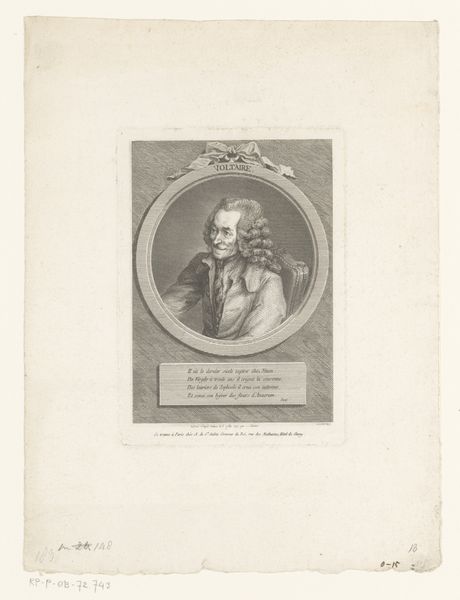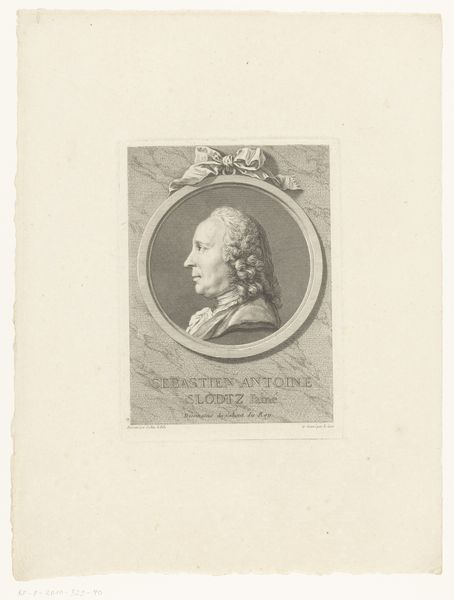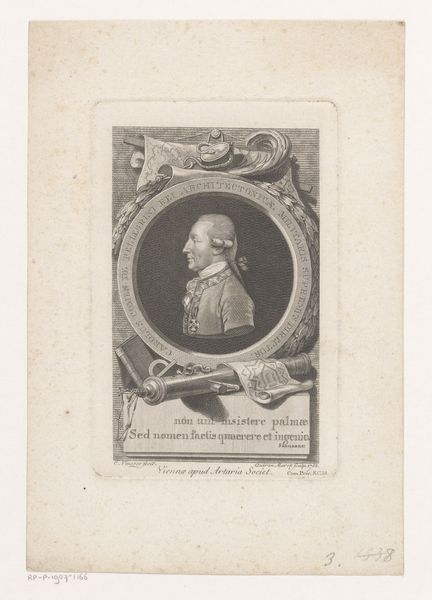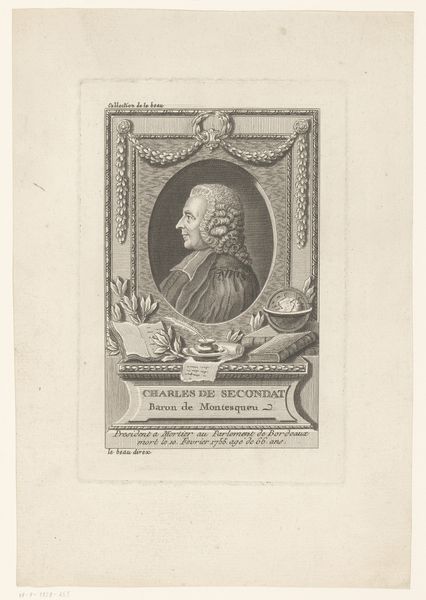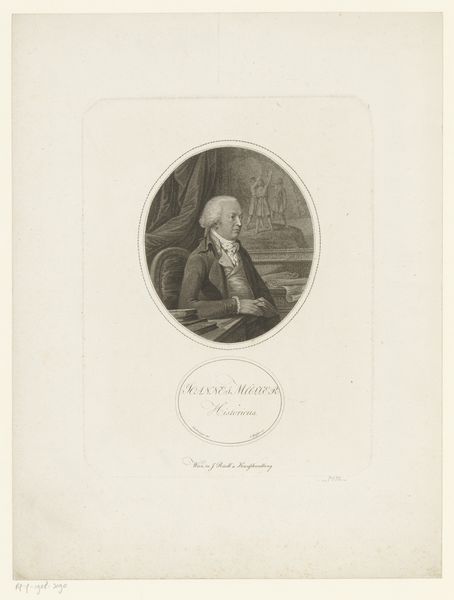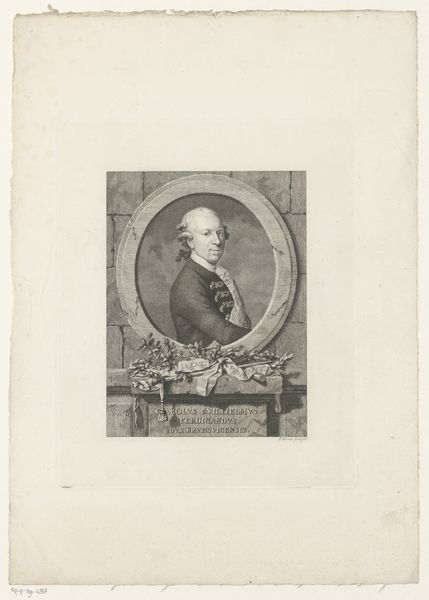
print, engraving
#
portrait
#
toned paper
# print
#
romanticism
#
genre-painting
#
engraving
Dimensions: height 364 mm, width 274 mm
Copyright: Rijks Museum: Open Domain
Editor: Here we have "Hunter with Hare," an 1847 engraving by Franciscus Bernardus Waanders, currently at the Rijksmuseum. It depicts a man, presumably the hunter, holding up a dead hare. The frame itself is quite ornate. I find the almost celebratory display of the dead animal unsettling, given our modern awareness of ecological issues. What strikes you most about this print? Curator: The print definitely presents a complicated view for our modern sensibilities. We must think of its social context. The work gives us insights into 19th century class structures and the romanticisation of nature, framed within the rise of industrial society. This is not simply a hunter displaying his kill; it’s about the performance of masculinity intertwined with land ownership and social status. The hunter seems like someone affluent and powerful within that social hierarchy. What do you think about how Romanticism, as a movement, plays a part here? Editor: That’s a great point. Romanticism idealized the connection to nature, often glossing over the realities of labor and, in this case, the taking of life. The man seems very composed, confident. Does his pose tell us anything about that hierarchy you mentioned? Curator: Absolutely. Consider his posture, the way he holds the hare almost as a trophy. The surrounding frame is filled with classical motifs and references to nature. Waanders is making a clear statement about man's dominion over the natural world, reinforcing the patriarchal structures of the time. It's essential to deconstruct the implied power dynamics embedded in the visual language. And if this were a woman instead of a man? Editor: Wow, reframing it that way makes it all the more apparent. So it’s not just about the hunt; it’s about reinforcing social narratives through artistic representation. It’s uncomfortable but very telling. Curator: Precisely. By understanding the intersection of class, gender, and our relationship with the environment, we can have critical discussions about our present and challenge historical power structures. I appreciate how receptive you were to rethinking an initial response.
Comments
No comments
Be the first to comment and join the conversation on the ultimate creative platform.
